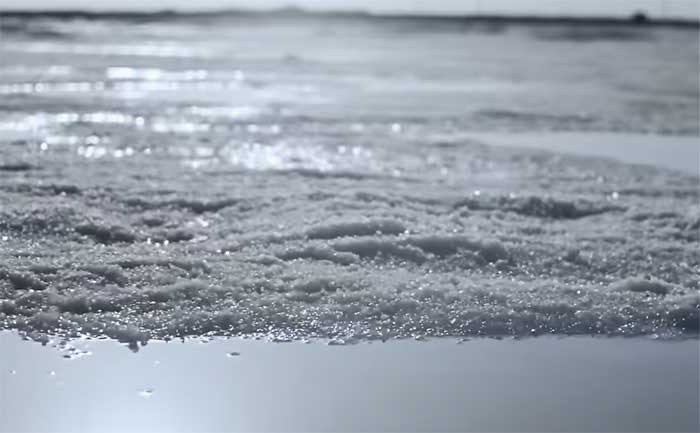How to Process Lake Salt
Production Steps of Lake Salt
Salt production from a lake is an ancient and sustainable method of salt extraction that harnesses natural processes. This method, known as solar evaporation, has been used for centuries in regions where the climate and geography are conducive to salt formation. Unlike mining or industrial salt production, which often involves significant energy consumption and mechanical processes, lake salt production relies primarily on the sun, wind and time.
This process, known as solar evaporation, is one of the most natural and environmentally friendly methods of salt production. It relies on the sun and wind to extract salt from lake water with minimal energy input.
One of the unique aspects of lake salt production is its minimal environmental impact. The method is highly sustainable, using renewable energy sources and leaving a low carbon footprint. Additionally, the resulting salt often retains trace minerals from the lake, contributing to its distinctive taste and potential health benefits.
The story of salt production from the lake is the most environment friendly in natural salt manufacturing. In essence, lake salt production is a harmonious blend of tradition, sustainability, and simplicity, yielding a product that is as much a result of the environment as it is of human ingenuity.
Natural Salt Production and Processing

1. Formation of Salt in the Salt Lake
The Salt Lake, registered as a first-degree natural protected area, is one of the saltiest lakes in the world, with a salt content of 32.4%.
Salt in the lake is formed by rain and underground waters melting the salt rocks in the depths of the lake and carrying them to the earth.
Salt production in the salt lake is done by crystallizing the salt as a result of evaporation of the lake water under the sun.

2. Raw Salt Pools and Storage Area
Water is transferred by pumps from the Salt Lake to the pools which is built within the lake, thus these pools reach a certain height.
As a result of evaporation, a natural raw salt layer of about 15-20 cm forms in these pools. Once the salt layer is formed, the production process begins.
The raw salt that is scraped by asphalt scraping machines is brought the storage area. Then the salt is transferred to the factory.

3. Grinding of Raw Salt before Washing
Before the raw salt is transferred to the washing unit, it passes through a gear roller. In this way, any foreign objects such as stones are sifted and also large salt pieces are ground and shipped to the washing unit in smaller ones.

4. Washing Unit – Washing of Salt
The salt is cleaned both physically and chemically in the washing unit. Some minerals in the salt are cleaned with clean drinking water. The moisture rate of the salt is approximately 10 % after it passed through the washing unit.

5. Squeezing Machine for Reducing the Salt Humidity
Because the salt’s moisture rate is 10%, the salt is transferred to the squeezing machine in order to reduce the moisture rate. The salt is rotated in the squeezing machine about two or three seconds. Due to the centrifugal force, the humidity rate of salt is reduced from ten to two percent.

6. Milling of Salt
The salt purified from humidity, sent to called Mill machine in order to prevent clumping. The salt is turned into desired size by grinding in the mill. Then it is sent directly to Drying machine.

7. Drying of Salt
In the squeezing machine, the moisture content of the salt is reduced from 10% to 2%, but the moisture level is still high and needs to be further reduced. As the salt pieces pass through the drying machine, which operates at a temperature of 180°C, their moisture content is reduced to 0.2%.

7. Salt Sieving and Packaging
The salt, exiting the drying unit with a moisture content of 0.2%, is transferred to sieves where it is sorted according to its micron size. The salt is separated by size in the sieves and then sent to the respective silos based on its micron diameter. The salt in the silos is packaged according to customer requirements.
